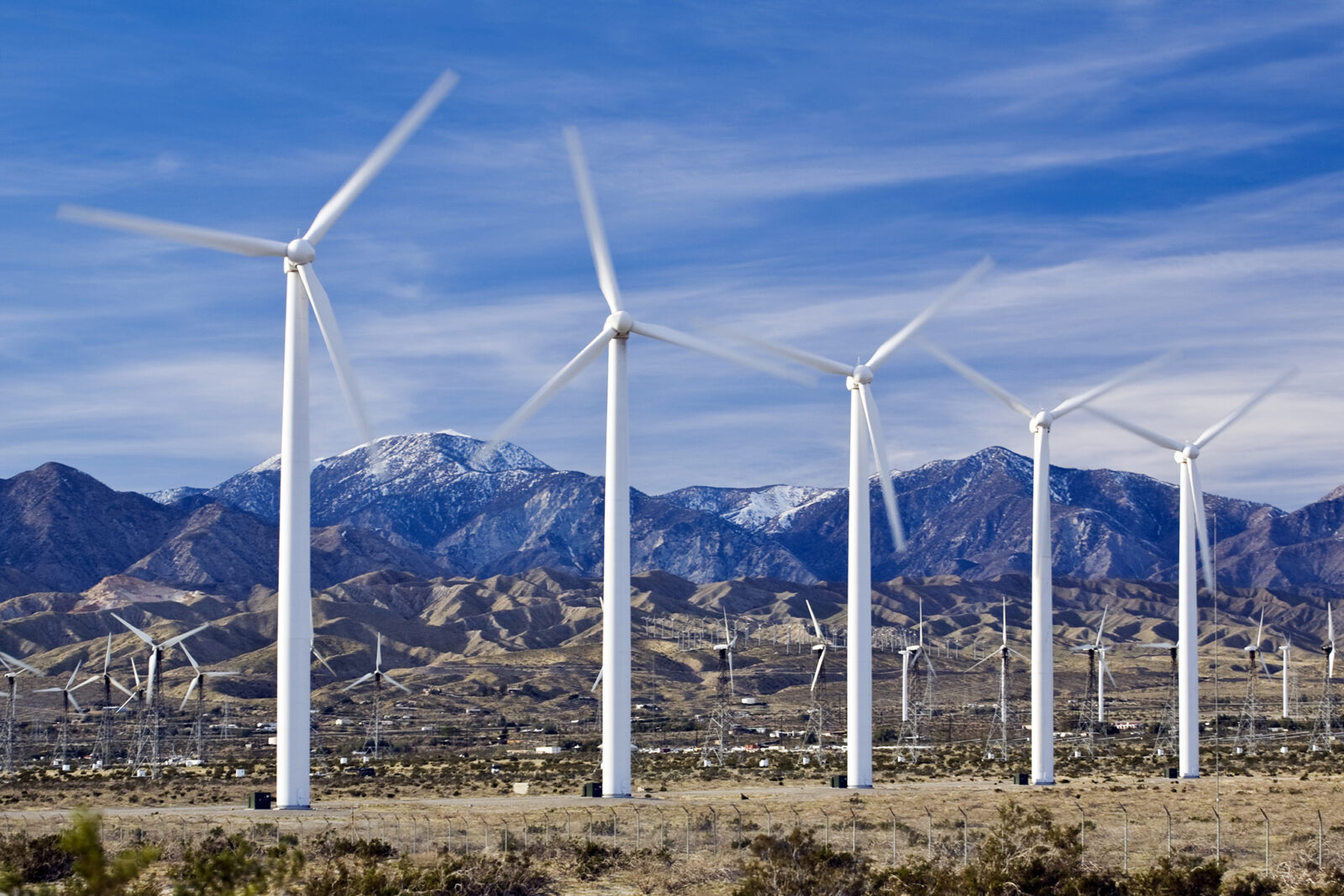The rapid transition to an increased usage of renewable energy has been a welcome change for people concerned with greenhouse-gas-induced climate change. The shift also has been supported by many who do not favor continuing reliance on fossil-fuel-exporting countries like Russia. There are benefits to the pivot to renewable energy production; however, the change is not completely without challenges.
Distributed energy generation in the form of small-scale retrofits, like rooftop solar, is an important part of the shift, but it is not a whole remedy because it does not fit well in existing energy sales models and may not be a large enough source to meet all demand. Utility-scale renewable energy production in the form of point production sources, like large photovoltaic solar fields, on- and offshore wind farms, geothermal plants, and hydroelectric facilities are a big part of the solution, but these have drawbacks as well.
One problem that makes the wholesale development of new utility-scale renewable power plants difficult relates to limits in the existing electrical transmission distribution system. The complex web of transmission lines that distribute energy from fossil fuel power plants to consumers does not match geographically with the best renewable energy zones across the country. See this article to learn more about how ESA can help deliver new electrical transmission infrastructure to transmit clean power from new source locations.




Limits in the existing electrical transmission distribution can hinder the wholesale development of new utility-scale renewable energy production such as geothermal plants, photovoltaic solar fields, wind farms and hydroelectric facilities.
Another challenge for these projects is finding the best space to build them. Desert areas across the southwest have high solar potential and are relatively near large population centers. To the casual observer, these arid landscapes can seem like vast barren zones where, historically, few people have lived. This is incorrect. For millennia, Native Americans have lived in the desert and many still call it home today. The desert holds a rich and unique archaeological record that is important to the descendant communities and many others. Given the size of the energy projects being built in the deserts, it is impossible to avoid all archaeological sites.
Numerous federal environmental regulations and policies are undergoing updates and many of these revisions to major environmental review requirements will affect renewable energy projects. Changes to the National Environmental Policy Act (NEPA), mitigation policy, disposition rules for archaeological collections, and exemptions for Section 106 National Historic Preservation Act reviews are all in the works. Some of these revisions are profound, while others are narrowly conceived.
The following paragraphs summarize regulation and policy shifts that will change the approach to successfully plan for, review, and develop a new solar field, wind farm, geothermal plant, hydroelectric power source, or energy distribution system.
Phased Changes for National Environmental Policy Act
For more than 50 years, NEPA has directed federal agencies to consider environmental values in their decision making while providing opportunities for the public to participate in the process. In 2020, several longstanding provisions were modified for the first time, shortening review times, limiting page counts for Environmental Impact Statements, and circumscribing impact analyses. The shortened NEPA time limits heighten the need for efficient Section 106 National Historic Preservation Act consultation procedures so as to not delay legally mandated NEPA milestones.
On April 20, 2022, the Council on Environmental Quality (CEQ) published a Phase 1 Rule that returned the previous requirement that all relevant environmental impacts must be considered, regardless of whether they are “direct,” “indirect,” or “cumulative” impacts. These Phase 1 changes clarify impact analysis requirements but remain silent on the page count and compressed schedule standards. Phase 1 changes become final on May 20, 2022, and environmental NEPA reviews underway that are not completed by then will have to shift to follow the updated requirements.
CEQ has committed to a broader set of changes in NEPA to come in Phase 2, which may also be significant. On the docket: addressing climate change, considering environmental justice challenges, and providing regulatory certainty to stakeholders. Notably absent from the Phase 2 list is relief for agencies on the page count limits or shortened schedules, both of which could be permanent. If the shortened NEPA schedules are permanent, then Section 106 consultations and state reviews under laws like CEQA, may still hinder overall project schedules if they are not coordinated to mesh with the NEPA efficiencies.
Benefits to Solar and Wind Power with Compensatory Mitigation Policy Change
On the policy front, the U.S. Department of the Interior’s top lawyer withdrew a controversial 2017 decision just last month that had made it very difficult for the Bureau of Land Management to use compensatory mitigation for projects that damage federal lands. The current memo reinstates the 2016 decision that made it clear federal laws allow the Secretary of the Interior and BLM to “identify and require appropriate mitigation” where warranted. This may seem like dramatic handwringing over esoteric bureaucratic rules, but large solar fields and wind farms proposed on public lands are exactly the types of projects that benefit from careful use of compensatory mitigation to address cumulative and indirect effects.

Desert areas across the southwest have high solar potential, as well as a rich and unique archaeological record.
Regulators can once again employ compensatory mitigation as a tool and, when it is done well, the mitigation may be seen as favorable by all parties. When compensatory mitigation is levied in a manner both related to and proportional to a project’s impacts, parties concerned with cultural resource impacts are more likely to be satisfied with the negotiated results. Resource values are then not seen as being sold but, rather, it is understood that the intangible values of heritage resources are being handled in an appropriate manner. Similarly, the project proponent will benefit with a more predictable review and approval schedule if the concerned parties feel a project is taking responsibility for the impacts it causes.
Significant Revisions for the Handling of Archaeological Collections
On another track altogether, the Department of the Interior amended the 36 CFR Part 79 and 43 CFR Part 3 regulations governing the curation of federally owned or administered archeological collections. These revisions took effect on May 16, 2022, and establish definitions, standards, and procedures that broaden options for transfer of archaeological material stored in repositories. Prior to this regulatory adjustment, almost all artifacts collected from federal land during Section 106 National Historic Preservation Act investigations for energy projects had to be curated in federally approved museums in perpetuity.

The new procedure has a review and public comment process that can result in the removal of portions of archaeological collections from museums. The artifacts can then be legally transferred to tribal land, returned to public land, given to other interest groups, or even possibly destroyed after studies have been completed.
This change in the treatment of archaeological collections could have implications for solar energy development. Section 106 National Historic Preservation Act investigations spurred by these energy projects often result in the legally required collection of large accumulations of archaeological material.
Some tribes do not want archaeological sites investigated due to the previous standard that artifacts removed from the sites had to be permanently curated. Now, with this new process in place, utility-scale renewable energy reviews can result in moving artifacts out of construction zones, studying them at museums or elsewhere as part of the review process, and then transferring them out of repositories as the final disposition. This new procedure may be time-consuming and expensive but is likely to become commonplace moving forward in certain energy development scenarios.
Streamlined Section 106 National Historic Preservation Act Review Benefits EV Charging Stations
On May 5, 2022, the Advisory Council on Historic Preservation (ACHP) published a proposed exemption that streamlines Section 106 National Historic Preservation Act review speeding up the transition to electric vehicles.

The proposal will exempt all Federal agencies from the Section 106 requirements for undertakings that propose to carry out, license, approve, or fund the installation, maintenance, repair, or expansion of vehicle charging stations.
There are sideboards on the proposal that limit use of the exemption to installations that are reversible, built within existing facilities, and that use low-profile equipment. Deadline for comment is June 4, 2022 and the ACHP will probably move quickly to adopt this rule supporting the shift to electric cars to meet ambitious national targets for electric car adoption. This highly focused regulatory tinkering could be dismissed as too restrictive to be of general interest but, when taken in aggregate with the other changes, it is indicative of an all-of-the-above approach by the government to foster the energy revolution.
Moving Forward
The NEPA adjustments, mitigation policy shifts, evolving disposition of archaeological collections, and targeted Section 106 exemptions are significant, and may be a small prelude to what is coming. The White House indicated this on May 11 when the “Biden-Harris Permitting Action Plan to Rebuild America’s Infrastructure, Accelerate the Clean Energy Transition, Revitalize Communities, and Create Jobs” was released. The action plan provides new environmental review direction for all executive agencies and departments and has five key elements:
- Accelerating smart permitting through early cross-agency coordination
- Establishing clear timeline goals and tracking key project information
- Engaging in early and meaningful outreach and communication with states, Tribal Nations, territories, and local communities
- Improving agencies’ responsiveness, technical assistance, and support
- Adequately resourcing agencies and using the environmental review process to improve environmental and community outcomes
Federal agencies are directed to prepare fully formulated environmental review implementation plans within 120 days of the Action Plan’s May 11 release. At that time, this administration will have 26 months left in the term to put new streamlining and efficiencies in place. The degree of change in environmental review procedures in the next several years may become quite breathtaking. These ambitious revisions are designed to accelerate environmental review while not sacrificing quality. All stakeholders involved deserve nothing less, so that good development decisions can be made to meet the renewable energy revolution
Let us know how ESA can make sure your energy market plans and projects stay up to date and consistent in the changing regulatory terrain. We have a large cadre of planners, cultural resources specialists, biologists, and other technical experts standing by to serve you. As a 100 percent employee-owned firm, we are committed to working for clients and communities to drive sustainable, resilient, and equitable solutions that shape a better world. A rapid evolution of environmental review is underway and working to contribute to the success of the new energy revolution is what we come to work to do every day.


